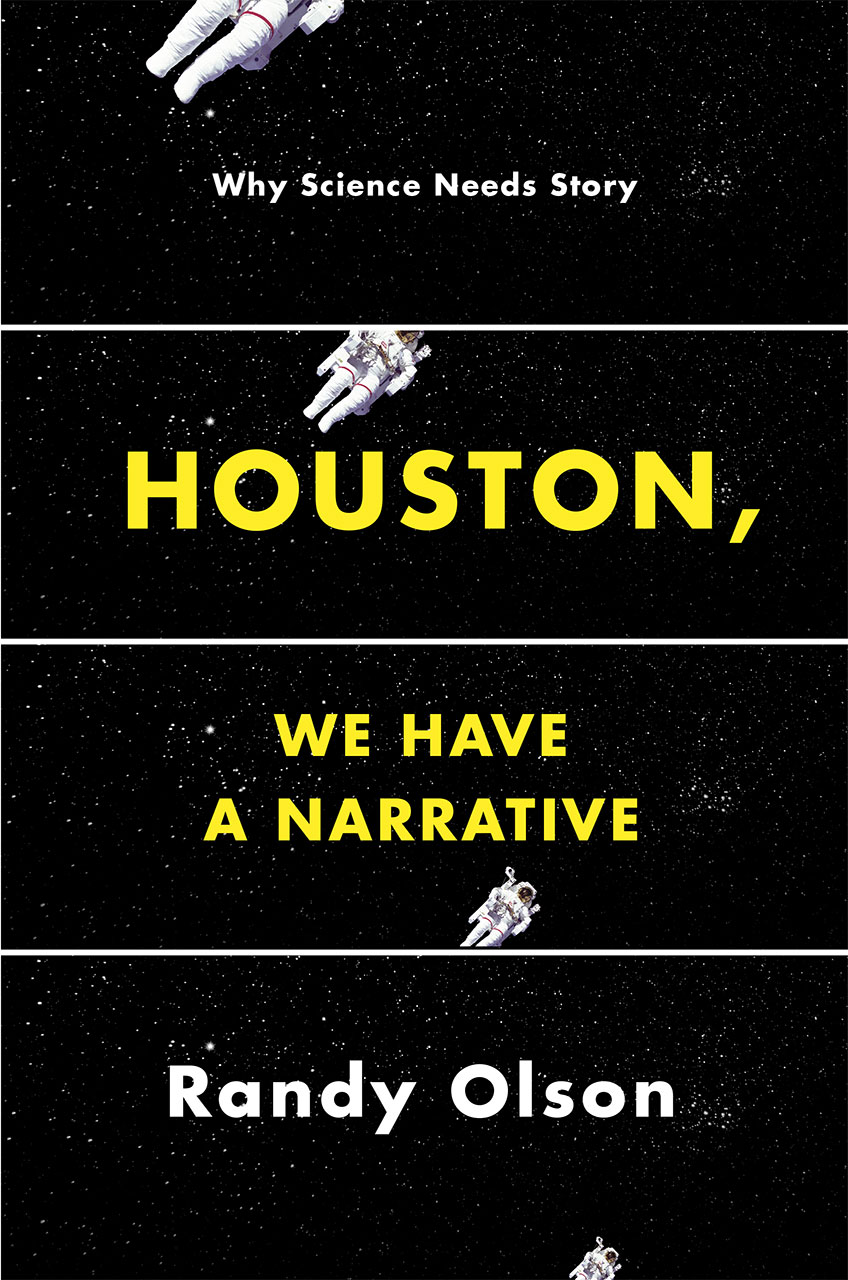
The main, long part of Randy Olson's Houston, We Have a Narrative: Why Science Needs Story is the second part, "Antithesis." In the first part, he goes into detail about the power of story and why science should learn how to make its work relevant and exciting by learning how to craft stories. In this second part, he shows how to do that.
He has broken his forms into what he calls the WSP model, or word, sentence, and paragraph.
The word template, or Dobzhansky template
When you want to boil down your main idea, turn to the Dobzhansky Template, named after a famous Russian American geneticist who said, "Nothing in biology makes sense except in the light of evolution."That's the essence of narrative right there. Just fill in the blanks: "Nothing in ________ makes sense except in the light of ________." Without that narrative that makes sense of the big picture, all you have are a list of facts, and nobody likes those.
Try to boil your work down to one sentence, to the main theme. What exactly are you trying to say? To get at? Why should we care about this aspect of science that you study? Because nothing in the bigger picture makes sense without it.
The sentence template: and, but, therefore
I already mentioned the and, but, therefore (ABT) template in my last post, and most of this second part is devoted to this form. Olson calls it the "Universal Narrative Template." The "Nothing in ________ makes sense except in light of ______________" is the main theme of your work, but the ABT template is how you should really try to communicate it.Scientists often get stuck in the and part, though. They just want to say, "and...and...and...and....and," which is what Olson calls the AAA structure. They never make it to the "but," which is really the problem that they're trying to solve. That's the conflict. Without the "but," we don't care about what you have to say. Without the "but," there really is no story. It's just blah, blah, blah.
It is the "but" that allows us to see the "therefore."
But then there are some who get bogged down in the "buts." They give us three or four or five problems instead of just one! This is the despite, however, yet (DHY) problem. The AAA bores us, but the DHY confuses us. Neither one allows us to follow the exact story. It's best to figure out the Dobzhansky Template and work from there.
Here was a wordy draft of the ABT template from Katelynn Faulk:
In my lab we model moderate sleep apnea in rats with a chronic intermittent hypoxia protocol in order to investigate the physiological mechanisms of sustained diurnal blood pressure, BUT we have realized the importance of molecular pathways within the central nervous system contributing towards blood pressure control, THERFORE we have begun exploring novel molecular pathways that develop as a result of our sleep apnea model.
She eventually drilled down to the core:
We were looking one way but realized there's another way therefore we're looking at that way.
Which allowed her to revise to something optimal:
I my lab we're studying sleep apnea using rats as our model system, AND we've been focused on physiological mechanisms, BUT lately we've realized the real controls may lie at the molecular level in the central nervous system, so AS A RESULT we've begun exploring novel molecular pathways.
That's the kind of revising we should all do.
The paragraph method: developing narrative intuition
This part is the hardcore part in story developing following Joseph Campbell's hero's journey. Olson gives us his "Logline Maker" to help:
- In an ordinary world
- A flawed protagonist
- Has a catalytic event that upends his/her world
- After taking stock
- The protagonist commits to action
- But when the stakes get raised
- The protagonist must learn the lesson
- In order to stop the antagonist
- To achieve his/her goal
No comments:
Post a Comment